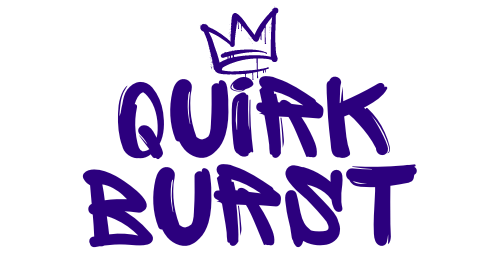Digital Minimalism: How to Declutter Your Online Life
In our hyper-connected world, it’s easy to feel overwhelmed. Every ding, ping, and pop-up demands our attention. Notifications keep us tethered to our screens, social media tempts us into endless scrolling, and our digital devices clutter not just our desktops, but our minds. This digital chaos leads to stress, distraction, and a disconnection from what truly matters.
Enter digital minimalism: a mindful approach to technology that encourages you to intentionally choose digital tools that align with your values. It’s not about abandoning tech altogether — it’s about using it deliberately to enhance your life, not dominate it. Whether you’re streamlining your social media or simplifying your online workspaces, resources like txrhlive.me can help support your digital wellness journey by connecting you directly to essential services with less noise.
In this guide, we’ll explore the philosophy behind digital minimalism and offer practical steps to help you declutter your digital life, reclaim focus, and live with more clarity and purpose. As platforms like txrhlive continue to prioritize ease of access and minimal interface clutter, users are beginning to see how simplified digital environments can lead to clearer thinking and a more intentional lifestyle.

What Is Digital Minimalism?
Definition
Digital minimalism is a philosophy that advocates for using technology with purpose and intention. The goal is to engage only with digital tools and services that truly add value to your life — and to happily ignore the rest. This idea is best encapsulated by Cal Newport, the author who popularized the term, who defines it as “a philosophy of technology use in which you focus your online time on a small number of carefully selected and optimized activities.”
Origins
The roots of digital minimalism lie in the broader minimalist movement, which encourages people to focus on what matters by eliminating the unnecessary. Drawing inspiration from Marie Kondo’s decluttering approach and minimalism as a lifestyle, digital minimalism applies the same logic to the digital realm. Cal Newport’s 2019 book Digital Minimalism: Choosing a Focused Life in a Noisy World sparked a global movement around this concept.
Core Principle
At the heart of digital minimalism is intentionality. You don’t need to go off-grid. Instead, assess each digital tool in your life and ask: Does this serve my values or goals? If the answer is no, it might be time to let it go.
Key Principles
Clutter Is Costly
Every unnecessary app, email subscription, or notification adds up. The more clutter, the more distracted and mentally exhausted you become. Minimalists recognize that digital excess has hidden costs — it fragments attention, disrupts focus, and steals time.
Optimize Your Tools
Rather than cutting out all tech, digital minimalism encourages you to optimize the few tools you do use. For example, use social media only during specific time blocks or turn off notifications for non-essential apps.
Intentionality Over Habit
Digital minimalists use tech by choice, not by default. They check their phones because they need to, not out of habit. This shift from compulsive use to intentional use is transformative.
Why Declutter Your Digital Life?
Reduces Stress and Anxiety
Constant alerts, inbox overload, and news feed drama increase stress levels. Simplifying your digital environment can lead to more peace and calm.
Improves Focus and Productivity
Every time you check your phone or open another tab, you lose momentum. Digital minimalism reduces these distractions, enabling deeper, more focused work.
Enhances Sleep Quality
Late-night screen time disrupts your sleep cycle. By removing digital distractions before bed, you can improve your sleep and feel more rested.
Strengthens Relationships
Being present with loved ones is difficult when you’re always checking your phone. Digital minimalism helps you reconnect with people in real life.
Cultivates Mindfulness
Living without constant digital noise helps you notice the world around you — from a beautiful sunrise to a quiet moment of reflection.
Signs You Need a Digital Detox
- You check your phone within minutes of waking up.
- You feel anxious when you’re offline.
- You struggle to complete tasks without checking social media.
- You’re busy all day but rarely feel accomplished.
- Your screen time reports surprise or even scare you.
If any of these sound familiar, it’s time for a digital reset.
Steps to Declutter Your Digital Life
Step 1: Take a Digital Detox
One of the most effective ways to start is with a 30-day digital detox. During this period, eliminate all optional digital tools — social media, video streaming, non-essential apps — and replace them with meaningful offline activities like reading, journaling, exercising, or spending time with friends and family. This reset helps you recognize what you truly miss and what you can live without.
Step 2: Audit and Remove Digital Clutter
- Review Your Apps: Delete anything you haven’t used in the past 30 days.
- Unsubscribe: Remove yourself from newsletters and mailing lists that add no value.
- Declutter Your Desktop: Organize files into folders and delete unnecessary downloads.
- Clean Up Your Social Feeds: Unfollow accounts that don’t inspire or educate you.
Step 3: Organize Your Digital Environment
- Home Screen Makeover: Keep only your essential apps on the first screen. Group others into folders.
- Inbox Zero: Use labels, filters, and folders to organize your email. Unsubscribe liberally.
- Cloud Storage: Store important documents in the cloud using a logical folder structure. Backup regularly.
Step 4: Manage Notifications and Screen Time
- Turn Off Non-Essential Notifications: Only keep alerts for messages, calls, or other critical apps.
- Use Screen Time Tools: iOS and Android have built-in tools that track app usage and let you set limits.
- Batch Your Digital Tasks: Check emails or social media only at specific times instead of throughout the day.
Step 5: Create Tech-Free Zones and Rituals
- Tech-Free Times: No screens during meals, before bed, or right after waking up.
- Phone-Free Rooms: Make your bedroom or dining room a screen-free sanctuary.
- Digital Sabbaths: Take a day off from screens each week to reset and recharge.
Step 6: Adopt Mindful Usage Habits
- Set Intentions: Before opening an app, ask yourself what you want to accomplish.
- Replace Digital Habits: Instead of doomscrolling, read a book or go for a walk.
- Reflect Regularly: Notice how digital decluttering affects your mood and productivity.
Tools and Strategies to Support Digital Minimalism
- Built-in Tools: Use Screen Time (iOS) or Digital Wellbeing (Android) to track and limit usage.
- Productivity Apps: Apps like Forest, Freedom, and RescueTime help you stay focused.
- Organizing Tools: Try Notion, Google Drive, or Dropbox for file organization.
- Analog Alternatives: Use paper journals, physical planners, and printed books to reduce screen time.
Maintaining a Digital Minimalist Lifestyle
Perform Regular Check-Ins
Schedule weekly or monthly reviews of your digital habits. Delete apps you haven’t used, unsubscribe from new mailing lists, and reassess your screen time.
Refine Your Digital Guidelines
As your life evolves, so will your needs. Adapt your digital usage to align with new goals while maintaining intentionality.
Focus on Freedom, Not Restriction
Minimalism isn’t about deprivation. It’s about freeing yourself from distractions so you can live more fully. Celebrate your progress, and give yourself grace when you slip up.
Be Flexible
It’s okay to reintroduce certain tools if they genuinely add value. Just be clear about how and why you use them.
Final Thoughts
Digital minimalism isn’t a one-time fix — it’s a lifestyle. By decluttering your digital world, you create space for what truly matters: focus, creativity, rest, relationships, and personal growth. Even small changes — like deleting one distracting app or turning off one notification — can make a big difference.
Remember, you don’t have to do it all at once. Start where you are. Choose one area of digital life to simplify, and build from there. With consistency and intention, you’ll discover a calmer, more connected way of living.






